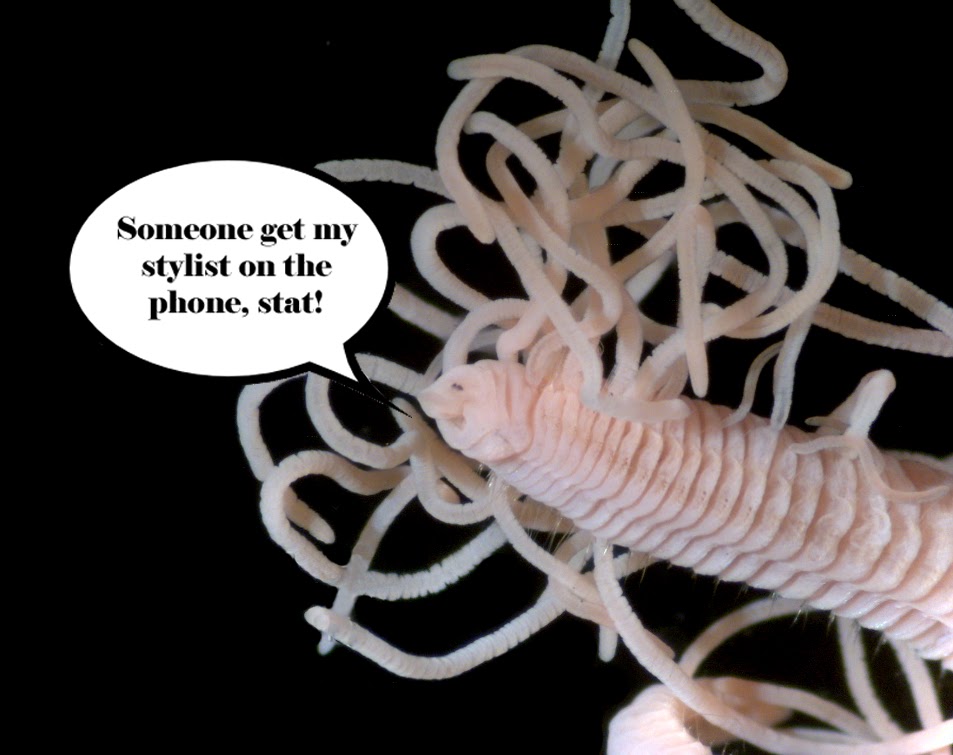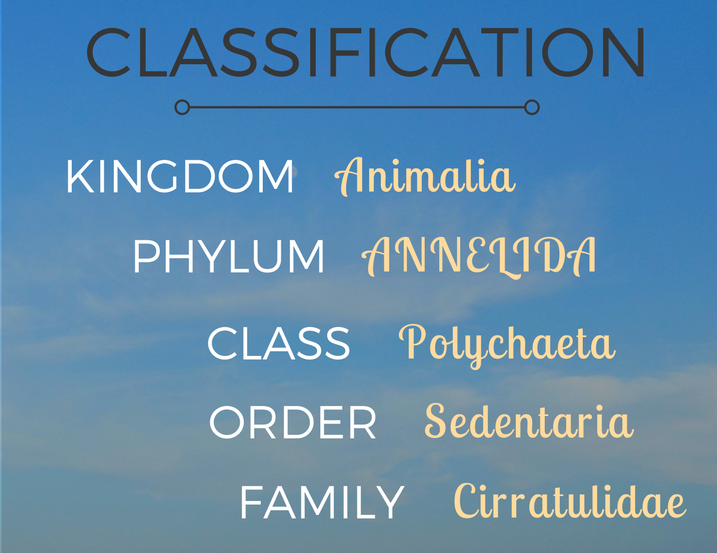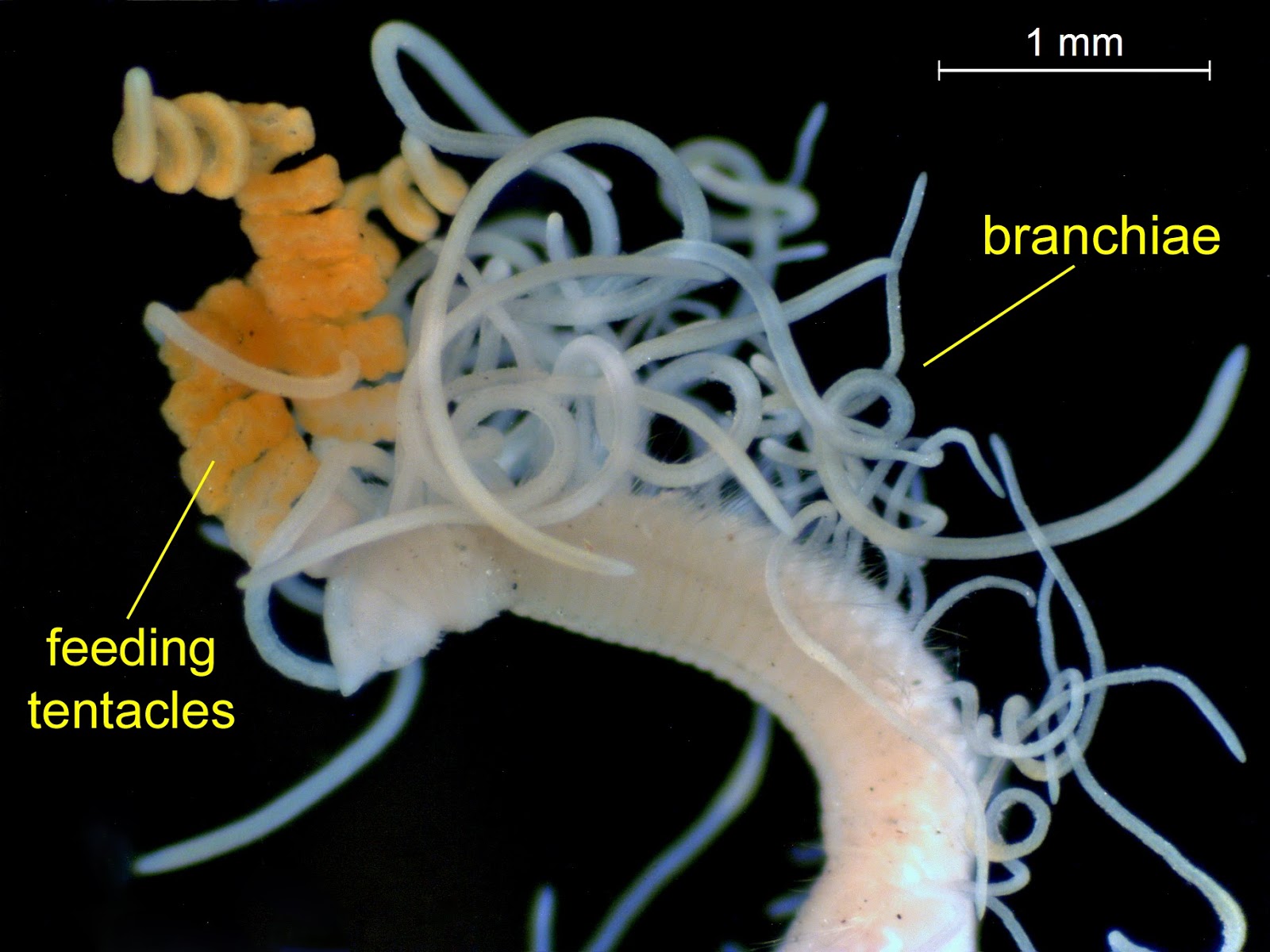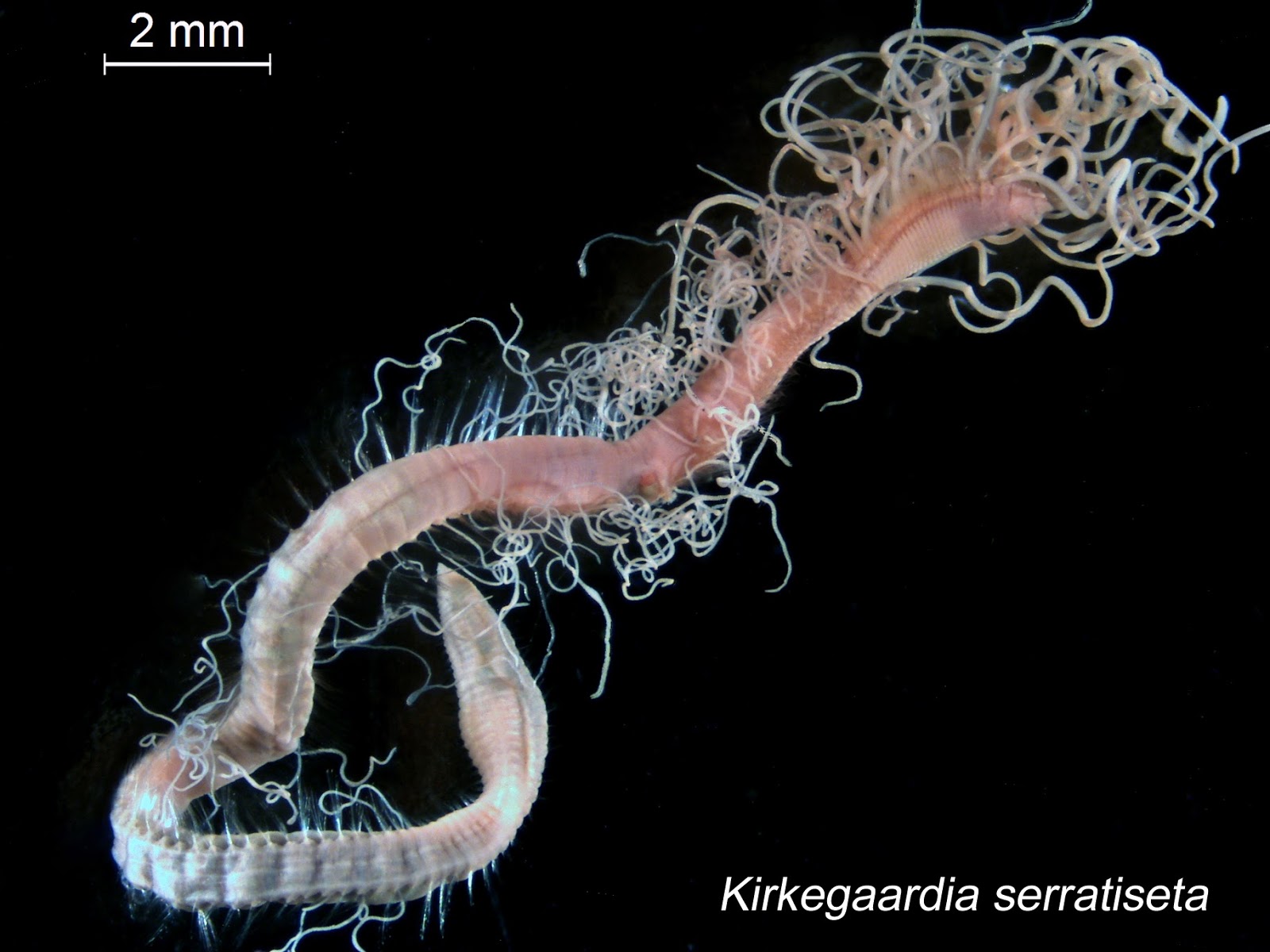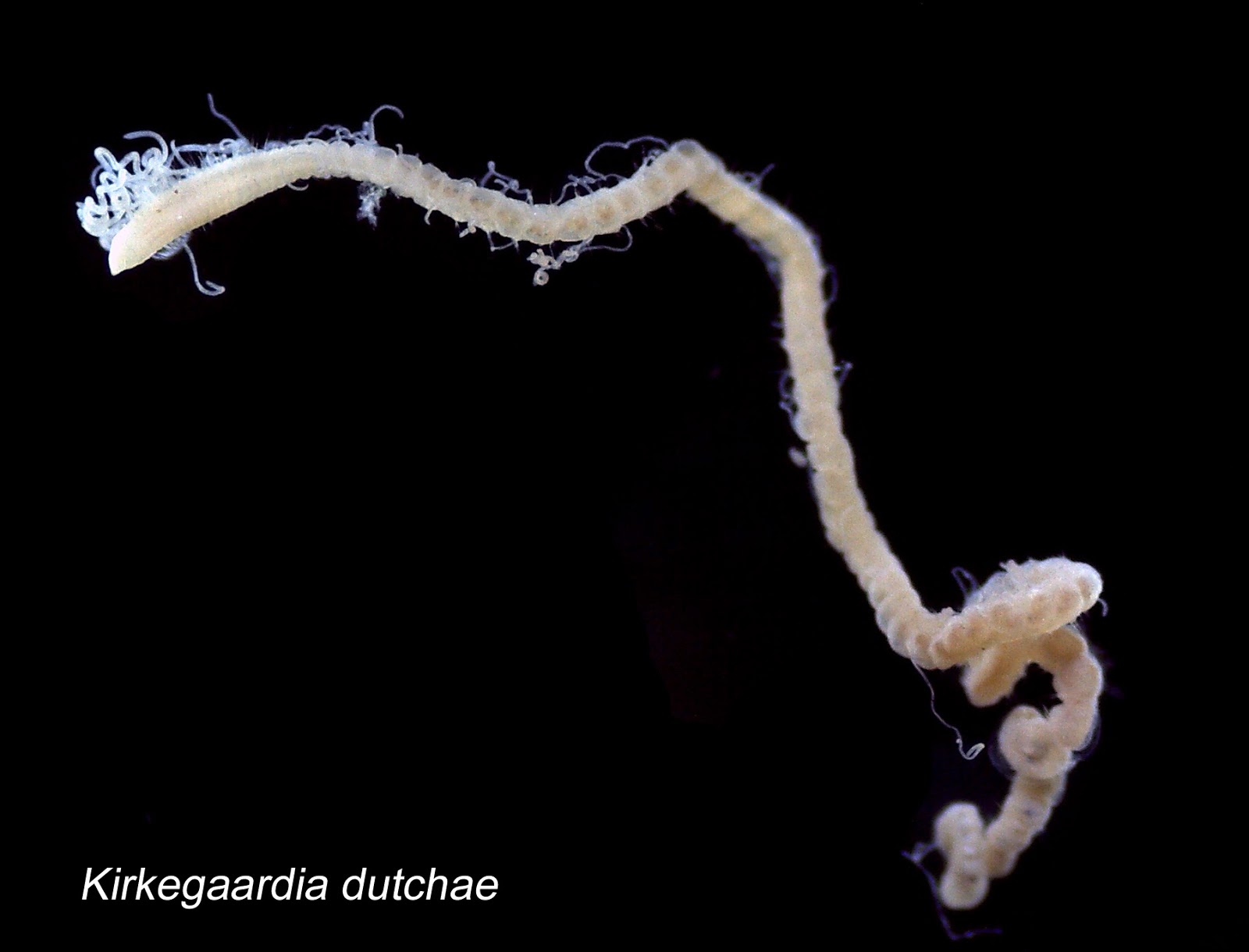This cirratulid worm has particularly dense “branchiae,” or gills, giving it that bed-head look.
Let your hair down
The hair worms belong to a family of polychaetes (marine segmented worms) called Cirratulidae, and their tangled “hairs” are actually branchiae, external gills that occur in pairs along their bodies. Branchiae are filled with blood vessels and help with oxygen exchange, which is especially important when you live in a low-oxygen environment like the soft sediments of Puget Sound.
Some species of hair worms, like the common Puget Sound species Aphelochaeta glandaria, have an additional centerpiece to their ‘do: a pair of grooved feeding tentacles located behind the head. When the animal is completely buried in the mud, it can extend the tentacles to the sediment’s surface to search for food particles, which are funneled back into the worm’s mouth. If only our hair were that functional! Aphelochaeta glandaria, the most abundant cirratulid species in Puget Sound.
Splitting hairs
Cirratulids are especially tricky critters to identify because there are many species that look similar, so taxonomists must use their smallest features to tell them apart. We examine the arrangement of their tentacles and branchiae under a microscope, as well as their setae — tiny hairs that poke out of each body segment.
For example, cirratulids in the genus Chaetozone have setae and spines arranged in rings called cinctures near the ends of their bodies, and each species’ cinctures are distinct. LEFT: A cirratulid polychaete in the genus Chaetozone.
RIGHT: A close up of the cinctures on Chaetozone’s posterior
The name game
Another reason that cirratulids give taxonomists major headaches is that many of them are new to science, so no published descriptions exist to compare them to. Polychaete experts diligently work at describing these new species and giving them names.
It is an aspiration for scientists to one day have a new species named after them — to be immortalized in the scientific record for all time. It’s against the scientific rules to name a species after yourself, so you must be deemed worthy by another scientist in order to go down in taxonomic history.
Here at Ecology, our own Maggie Dutch, lead scientist of our Marine Sediment Monitoring team, recently received this honor when her former colleague redescribed a genus of cirratulids and named one of the new species Kirkegaardia dutchae! The new species of cirratulid from Puget Sound, named after our very own Maggie Dutch!
Maggie provided specimens of K. dutchae from the Marine Sediment Monitoring Program’s species collection for use in the redescription study, published by Jim Blake in 2015. This unique thread-like cirratulid is known only from shallow depths of Puget Sound.
Critter of the Month
Our benthic taxonomists, Dany and Angela, are scientists who identify and count the benthic (sediment-dwelling) organisms in our samples as part of our Marine Sediment Monitoring Program. We track the numbers and types of species we see in order to understand the health of Puget Sound and detect changes over time.
Dany and Angela share their discoveries by bringing us a Benthic Critter of the Month. These posts will give you a peek into the life of Puget Sound’s least-known inhabitants. We’ll share details on identification, habitat, life history, and the role each critter plays in the sediment community. Can't get enough benthos? See photos from our Eyes Under Puget Sound collection on Flickr.


